Papers by Daphne Nash Briggs
ARA News, 2022
We discuss aspects of all three narrative panels of this late-4th-century Roman floor mosaic. Lay... more We discuss aspects of all three narrative panels of this late-4th-century Roman floor mosaic. Layout and style suggest familiarity with an illustrated codex copy of the Iliad, but its content diverges in several respects from Homer’s narrative as we know it. We relate these differences to topical concerns in the late 4th century amongst educated, wealthy, land-owning families with public responsibilities in civilian lowland Britain. We pay especial attention to the chariot confrontation between Achilles and Hector and to Priam’s ransom for Hector’s body, relating both to an increasing prevalence of personal loss caused by predatory seaborne raiding in the period when the mosaic was laid.
Britannia, 1982
Book review.
ARA News 46, pp 51–55, 2020
ARA News 45, pp 11-15, 2020
Antiqvvs vol 3.1, winter 2020/21, 2020
Journal of Indo-European Studies monograph 67: Revisiting Dispersions Celtic and Germanic ca. 400BC-c. 400 AD, 2020
Oxford Journal of Archaeology, 1982
... I have treated this subject in greater depth in D. Nash, Lineage, Class and State in Celtic E... more ... I have treated this subject in greater depth in D. Nash, Lineage, Class and State in Celtic Europe c.600-50 BC (forthcoming). ... Institute of Archaeology Bulletin 15, 73-1 12. MACK, RP 1975: The Coinage of Ancient Britain, (London, Spink & Son Ltd., third edition). ...
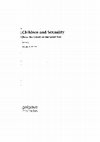
Children and Sexuality, 2007
‘[The Athenians] love him, they hate him, they cannot do without him’ (Aristophanes, Frogs 1425).... more ‘[The Athenians] love him, they hate him, they cannot do without him’ (Aristophanes, Frogs 1425). This was a comment made about the fearless, fickle, and above all controversial figure of Alcibiades not long before he died in 404 BC in squalid circumstances (shot with arrows, running naked from a burning cabin in a village in Asia Minor where he had spent the night with two prostitutes). At the height of his power and influence his chariots had been placed first, second and fourth at the Olympic Games in 416 BC (he had entered an unprecedented seven teams), and he had been elected one of the Athenian generals on the Sicilian campaign in 415 BC. Having been recalled to Athens to face charges of impiety (accused of the equivalent of celebrating Black Masses in his home) and having been condemned to death in absentia, he fled to Sparta. Here, he not only seduced the wife of one of the kings and (some said) got her with child, but assisted the Spartans to attack Athens in the most effective ways possible. We hope to investigate elsewhere what Plutarch called ‘the strange inconsistencies and contradictions’ (Plutarch, Alcibiades 2.1) that Alcibiades displayed throughout his adult life. Here, we shall concentrate on his childhood, concerning which we have a rich fund of telling anecdotes. These have rarely received the attention they perhaps deserve, for reasons we shall discuss later.
Sekunda, N. (ed.), Wonders Lost and Found. A celebration of the archaeological work of Professor Michael Vickers. Oxford, Archaeopress, pp. 160–184 , 2020
This is a detailed interpretation of visual and verbal interplay in the densely crafted design of... more This is a detailed interpretation of visual and verbal interplay in the densely crafted design of the Undley-A gold bracteate, which seems to present a local British post-Roman ruler's political agenda with reference to narratives and poetry in at least two languages. Its historical implications are explored, with suggestions for interpreting all gold bracteate pendants as evidence for personal contractual relations at the highest possible social level. Nash Briggs 2020 (here) is an updated version of the 2017 pre-print draft of text and illustrations already posted below; a pdf of the published text (available now on request) cannot be uploaded until March 2222.

Haeussler, R. and King, A. Celtic Religions in the Roman Period, Personal, Local and Global. Aberystwyth, Celtic Studies Publications, pp. 79–102, 2017
This paper revisits the late-4th century Roman treasure found in 1979 on Gallows Hill, Thetford (... more This paper revisits the late-4th century Roman treasure found in 1979 on Gallows Hill, Thetford (Norfolk) – a place of long-term ceremonial and funerary significance that straddles the Icknield Way close to where it crosses an important prehistoric, Roman, and post-Roman tribal boundary. A review of Latin traditions concerning deus Faunus, who is named on silver spoons in the treasure, and detailed discussion of the 8 non-Latin theonyms coupled with his, suggest a high degree of correspondence, with multiple lines of historical and material connection, between well-researched pre-Roman activity in that same place, aspects of the known pre-Roman history of the Iceni, and some less generally familiar 1st-cent BC/AD Icenian coin images that might account for the association of Faunus' name with what must have been a powerful ancestral genius loci long associated with one of the territory's ruling clans. It also suggests the relevance of this, and late-Roman Bacchic spirituality, to the late-Roman people represented in the treasure. The paper concludes with a speculative sketch of some historical circumstances that might help to explain why this treasure was assembled and buried where and when it was.

This article updates and, in places, corrects my initial paper on the subject (Nash Briggs, D. (2... more This article updates and, in places, corrects my initial paper on the subject (Nash Briggs, D. (2011), “The language of inscriptions on Icenian coinage”).
Ancient British coin inscriptions mostly name war-lords, rulers, or officials, thereby lending scraps of insight into language use, at least amongst the senior social elite in southern Britain, between the late 1st century BC and c. AD 45 or 60, or whenever native coinage ended after Claudius’ conquest. Almost all such names are plainly in Brittonic, or are in Latin reflecting Brittonic (an interesting language choice in its own right). There are, however, some exceptions, all in Norfolk, where several coin inscriptions record non-Latin, non-Brittonic, but plausibly West Germanic names and speech-forms. These must belong to some of the richest and most influential people in the nothern cantons of the Civitas Icenorum, long before the Romans can have had any direct influence on the character of Britain’s ethnic mix. They therefore raise some very interesting questions about the identity, politics, and maritime connections of some of the permanent residents of the Fen edge and North-Sea shoreline.
ISSN 2297-2625; DOI https://doi.org/103726/PHIL012017.7
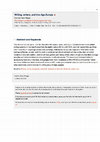
This chapter has two parts. The first describes the origins, types, and uses of alphabetic and se... more This chapter has two parts. The first describes the origins, types, and uses of alphabetic and semi-syllabic writing systems in Europe from the 8th century BC to c. AD 1000, and their spread through three main networks of long-range contact and exchange. It illustrates the typical progression from short labels naming craftsmen, owners, and the dead, to practical records of contracts and law codes, then canonical versions of elite oral tradition, and the ultimate generalized literacy of the urban civilizations. Inscribed coinage provides well-dated evidence in many otherwise non-literate places. The second part reviews first-hand accounts by travellers, historians, and geographers from Hecataeus (c. 550–476 BC) to Ahmad Ibn Fadlan and Adam of Bremen (10th–11th cent. AD), tracking incremental changes over time in the range of what was known, and in motives for writing about foreign peoples.
Keywords: literacy, writing, geographer, inscription, alphabet, nomad, coin, Tartessian, ogam, rune
Review article (1975) of J.B. Colbert de Beaulieu's Traité de numismatique celtique (1973). It is... more Review article (1975) of J.B. Colbert de Beaulieu's Traité de numismatique celtique (1973). It is critical of this influential senior scholar's historical method and of his theory-led picture of the Gauls, and was the first of several of my publications in the 1970s and 1980s that offered alternative, evidence-based, social and economic models and a more plausible chronological framework for understanding the Gauls in the late pre-Roman Iron Age.
This paper discusses the role of metals, salt, textiles, and slaves in the development of network... more This paper discusses the role of metals, salt, textiles, and slaves in the development of networks of reciprocal exchange that interlinked the elites of Etruscan Italy and Early Iron Age Gaul between the 8th and 6th centuries BC. Maritime and transalpine contact are considered separately. Certain regional specialisms in Gaul are discussed: metals in the west and centre, supporting prosperous HaD elites around the rim of the Massif Central, salt on coasts and in the east, perhaps in exchange for Italian textiles, and slaves perhaps especially from the 6th-century BC Aisne–Marne/Mont Lassois complex. A principal point is to establish the ubiquity and economic importance of women and children as domestic slaves both in Italy and Gaul and their consequent significance as valuable objects of elite exchange. Development in patterns of slave procurement during this period are considered.
Further thoughts about the Arverni and their coinages (Central Gaul, in the second and first cent... more Further thoughts about the Arverni and their coinages (Central Gaul, in the second and first centuries BC), more than 20 years on from views I first expressed in the 1970s.
Written in 1977, based on Oxford D.Phil 1975. Discusses archaeology, numismatics, and historical ... more Written in 1977, based on Oxford D.Phil 1975. Discusses archaeology, numismatics, and historical texts and offers a model for early state formation in Central Gaul on the periphery of the expanding Roman empire, but before the actual Roman conquest.
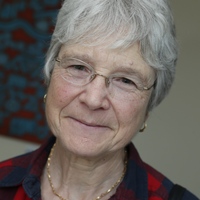

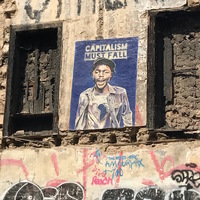





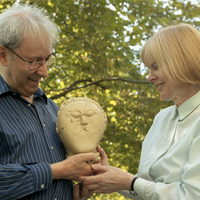


Uploads
Papers by Daphne Nash Briggs
Ancient British coin inscriptions mostly name war-lords, rulers, or officials, thereby lending scraps of insight into language use, at least amongst the senior social elite in southern Britain, between the late 1st century BC and c. AD 45 or 60, or whenever native coinage ended after Claudius’ conquest. Almost all such names are plainly in Brittonic, or are in Latin reflecting Brittonic (an interesting language choice in its own right). There are, however, some exceptions, all in Norfolk, where several coin inscriptions record non-Latin, non-Brittonic, but plausibly West Germanic names and speech-forms. These must belong to some of the richest and most influential people in the nothern cantons of the Civitas Icenorum, long before the Romans can have had any direct influence on the character of Britain’s ethnic mix. They therefore raise some very interesting questions about the identity, politics, and maritime connections of some of the permanent residents of the Fen edge and North-Sea shoreline.
ISSN 2297-2625; DOI https://doi.org/103726/PHIL012017.7
Keywords: literacy, writing, geographer, inscription, alphabet, nomad, coin, Tartessian, ogam, rune
Ancient British coin inscriptions mostly name war-lords, rulers, or officials, thereby lending scraps of insight into language use, at least amongst the senior social elite in southern Britain, between the late 1st century BC and c. AD 45 or 60, or whenever native coinage ended after Claudius’ conquest. Almost all such names are plainly in Brittonic, or are in Latin reflecting Brittonic (an interesting language choice in its own right). There are, however, some exceptions, all in Norfolk, where several coin inscriptions record non-Latin, non-Brittonic, but plausibly West Germanic names and speech-forms. These must belong to some of the richest and most influential people in the nothern cantons of the Civitas Icenorum, long before the Romans can have had any direct influence on the character of Britain’s ethnic mix. They therefore raise some very interesting questions about the identity, politics, and maritime connections of some of the permanent residents of the Fen edge and North-Sea shoreline.
ISSN 2297-2625; DOI https://doi.org/103726/PHIL012017.7
Keywords: literacy, writing, geographer, inscription, alphabet, nomad, coin, Tartessian, ogam, rune
The collection is based on the thirteenth workshop of the F.E.R.C.AN. project (Fontes epigraphici religionum Celticarum antiquarum), which was held from the 17th to the 19th October 2014 in Lampeter, Wales.